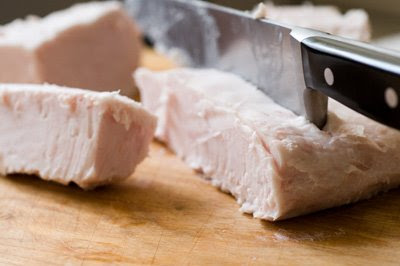Lance-- It will make 2.5-4 lbs, depending on how much lean you're dealing with and whether you completely render all the fat or just most of it.
It is very easy to make. The process I note on the thread you link to is somewhat more involved than the process on the thread Steve links to - but I like lard that is light tasting and near white, so I go with an extra step (noted in the post downthread - the one with the pics - where I place the rendered fst into containers with plenty of water, pouring off the water the next day then melting and straining again).
I use more water than most during the initial rendering. This not only makes the process virtually foolproof, it is gentler and the heat transfer is more efficient. Though I mention using 1/3 the volume on smaller batches I find it works better to simply use a smaller pot and stick with the 1/2 volume of water I recommend for larger batches.
You could start with 2.5-3 lbs if you wish. Yes, you can use shoulder trimmings, but I'd recommend grabbing a piece of fatback or two from your local carnecería and adding it to the pot, skin removed first of course.
Yup. Wrap tightly and and freeze.

